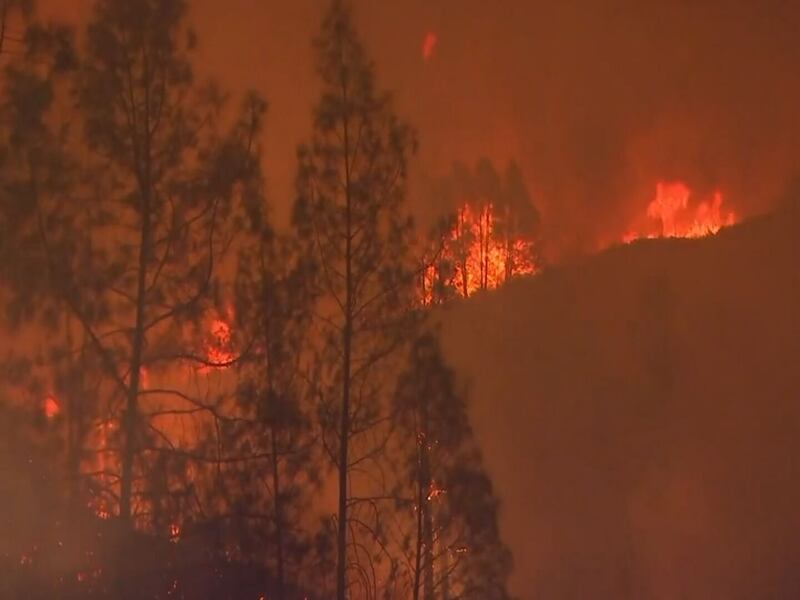As the size and danger of wildfires continue to grow across the United States, a new watchdog report is shedding light on the ongoing recruitment challenges for the federal government to hire and keep federal wildland firefighters on the job.
A new report from the U.S. Government Accountability Office (GAO) said wildfires destroyed more than 12,000 homes, businesses, and other structures in the U.S. on average each year from 2017 to 2021.
Despite the growing need, recruitment remains a big challenge for the federal government.
The report points to recruitment barriers like low pay, career-advancement challenges, and mental health concerns among other issues.
“Forest Service and Interior officials and all 16 stakeholders we interviewed for our 2022 report said that the pay for federal wildland firefighters is low,” the report said. “Officials and eight stakeholders also noted that the pay does not reflect the risk or physical demands of the work. We reported that the Forest Service and Interior agencies in August 2021 implemented an administration initiative to increase the minimum hourly wage for federal wildland firefighters from $13 to $15 per hour.”
The report said while the increase in pay was a positive step, “pay still did not reflect the demands of the job and was not competitive with nonfederal entities.”
“The recruitment process is broken,” said Casey Judd, President of the Federal Wildland Fire Services Association. “Let’s take care of our federal wildland firefighters. Let’s compensate them properly. Let’s recognize them for who they are and once we do that, we’ll see if we improve recruitment and retention.”
Judd said federal firefighters have been flagging these recruitment challenges since at least the 1990s and said it’s long overdue for a change.
“Maybe we should have started a wee bit longer ago and we could have had a lot of these issues resolved by now,” said Judd. “We just need better communication with all groups of folks and let’s use our money wisely.”
In response to the GAO report, a spokesperson for the U.S. Department of Agriculture pointed out that Congress did allocate more money for the Department to help address these growing needs in the latest budget: “The USDA Forest Service Fiscal Year 2024 Budget takes another significant step forward in ongoing efforts to build and maintain a professional, year-round workforce that is better aligned with the challenges of today’s wildfire activity which are expected to continue to increase due to climate change. The Budget builds upon the historic reforms in the Bipartisan Infrastructure Law (BIL) by providing a permanent solution for Federal wildland firefighters.
Increasing investments in the Federal wildland fire management workforce to deliver an updated, competitive, and equitable pay structure and an improved support system will help address recruitment and retention challenges that have affected this workforce for decades.
We greatly appreciate the significant resources Congress has provided through the BIL and the IRA that will allow the Forest Service, with our many partners, to take the initial steps to address the wildfire crisis.
We remain committed to working with congressional leaders on this crucial proposal. We look forward to working with Congress to support, retain, and modernize the federal wildland firefighter workforce.”
©2023 Cox Media Group








